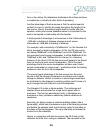
16
absolute fidelity
anywhere from 45 deg to 135 deg (or require that the input to the
Control Module be phase inverted if the power amplifier used is
phase inverting).
Now that you have roughed the system in, you may want to
experiment with different phase angles. Using the remote control
you can adjust the woofer's phase angle up and down in five-
degree increments.
The changes are subtle and they usually affect the imaging and
soundstage. Listen carefully to the positioning (in acoustic space)
of the orchestral players as you change the phase control. You
may notice small shifts in their apparent relationship to the other
members of the orchestra. Do not expect them to actually move.
Expect minute changes in the soundstage, the apparent width of
the stage, your ability to distinguish individual players etc. If you
reach a phase shift of ninety degrees you have probably gone too
far. Using the recommended connection, the phase shift needed is
usually 15 degrees or below.
The other change to listen for is rhythm and timing. Adjusting the
phase will subtly change the relationship between the bass and the
midrange. When you get the phase perfectly correct, you will find that
the timing between the vocalist and the double bass “snaps” in place,
and your foot will start to tap, and you will sway to the music. This is
basically what we term “PRaT” – or Pace, Rhythm and Timing.
Further adjustments
With the woofer towers positioned in the recommended placement
behind and outside the midrange tweeter panels, low bass in the
room should not be a problem. Should you have too much bass,
simply turn the volume down on the remote control. Too little, and
the opposite will apply.
In general, the low-pass filter and the bass volume goes in opposite
directions. With higher bass volume, a lower frequency for the low-
pass is needed. And with lower bass volume, a higher frequency is
needed for the low-pass.
In some problematic rooms a resonance may develop at one or
two frequencies that is unnatural to the music. By moving the
woofer towers closer to the rear or side wall or farther
from the rear
or side wall, the resonance may be reduced at the listener’s


















